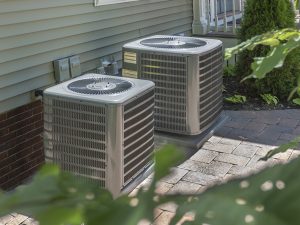Update on ACCA 310
Update on ACCA 310: HVAC Grading and What You Need to Know
You may have heard a lot of news lately about ANSI/RESNET/ACCA Standard 310. BER would like to give you the latest news on this new standard and what to expect in the near future.
ANSI/RESNET/ACCA Standard 310-2020 “Standard for Grading the Installation of HVAC Systems” (shortened to Standard 310 hereafter) was submitted for public comment in 2019 and finalized into the current standard on June 23, 2020. In summary, Standard 310 defines five tasks a HERS Rater can perform to evaluate and grade a forced-air HVAC system’s design and installation. Use of the standard is voluntary, but compliance can potentially lower the home’s HERS Index score, with an estimated average national reduction of 5 points for full Grade 1 compliance. Additionally, Standard 310 can also take the place of certain ENERGY STAR HVAC review elements.

The application of Standard 310 consists of five steps, each performed individually and in sequence.
- HVAC system design.
Rater evaluation of the HVAC design performed by the design professional. Key features must fall within defined tolerances for the grading process to continue to the next step. - Measurement of total duct leakage.
This step measures total duct leakage according to RESNET Standard 380 and grades the duct tightness on a Grade I – III scale. The duct system must achieve a Grade I or II to continue to the next step. - Measurement of system airflow.
The total volumetric airflow going through the blower fan must be measured using either a flow hood, a flow grid, pressure matching, or by using the OEM static pressure table. The result is compared to the design airflow and assigned a Grade I – III. The system airflow must achieve a Grade I or II to continue to the next step. - Measurement of fan watts per cfm.
The watt draw of the blower fan must be measured using either a plug-in watt meter, a clamp-on watt meter, or the utility meter. The fan efficiency can then be calculated and assigned a Grate I – III. There is no minimum required grade for this task. - Measurement of refrigerant charge.
The system refrigerant charge must be measured using either a non-invasive method or a weigh-in verification method. The non-invasive method uses the temperature of the air and refrigerant lines to calculate the charge; refrigerant gauges are not connected to the system. The weigh-in verification method is primarily a document review and must be used for systems in extreme climate conditions and mini/multi-split systems.
These tasks are intended to be non-intrusive or have a minimal impact on the system installation, but some of these can be challenging to complete without specialized equipment and techniques. The best practices for performing each of these measurements will depend on the system and testing equipment the Rater has access to. BER is currently developing a series of training videos to answer the anticipated questions that will be asked by practitioners of the Standard.
While Standard 310 is a final, published document, how it is applied is still a work in progress. There are currently two limitations to the widespread adoption of Standard 310:
- Accredited Software Versions
To apply Standard 310, Raters must use only approved software rating tools to show credit for HVAC grading. Only one company currently offers an approved software option. - Mandatory Training
Only Raters or Rating Field Inspectors who are Standard 310 certified may apply the Standard. The certification process includes a free, four-part video training offered by RESNET and a Graded Field Evaluation (GFE) with a HVAC Grading-Certified QAD.
As of now, only EnergyGauge USA has incorporated 310 procedures. Both REM/rate and Ekotrope have plans to incorporate Standard 310 HVAC Grading options in a future update.
When the software is finally approved, we anticipate a large demand for certified HVAC Grading professionals. There is no need to wait until then to obtain your Standard 310 Certification. BER currently has a HVAC Grading-Certified QAD ready to complete your GFE! By simply completing the four RESNET training videos, and scheduling a GFE with BER, you can be ready to grade HVAC design and installation on day one.
Also, keep an eye out for additional training videos from BER that will answer your most detailed questions about the application of Standard 310.

